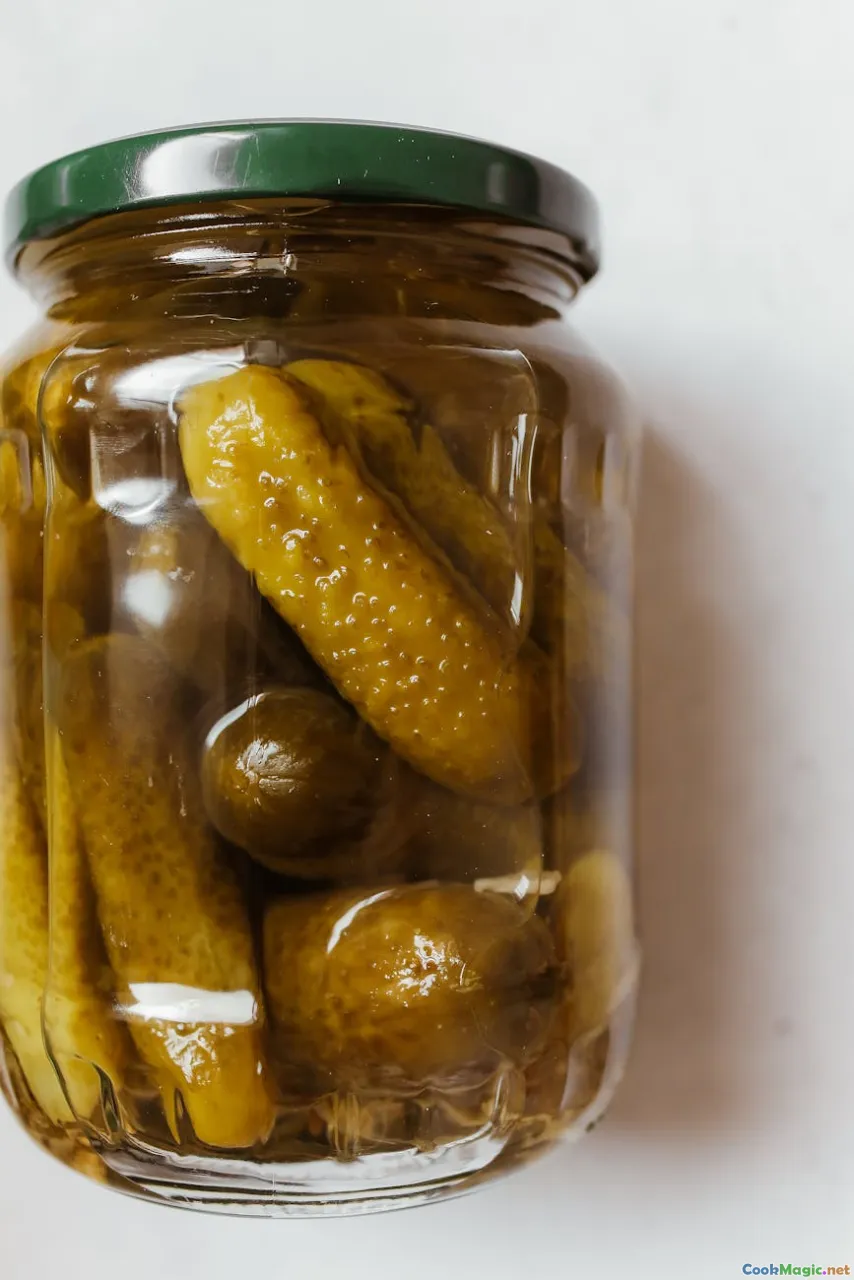Sri Lankan Pickles and Relishes Explained
7 min read Discover the rich flavors and cultural significance of Sri Lankan pickles and relishes, exploring their history, ingredients, and culinary role. April 26, 2025 20:55
Sri Lankan Pickles and Relishes Explained
Imagine a burst of fiery heat mingling with tangy sweetness on your palate, a symphony of flavors that tell stories of centuries-old traditions. Sri Lankan cuisine, renowned for its bold and vibrant tastes, offers an exquisite array of pickles and relishes that are more than mere condiments—they are an integral part of the island’s cultural tapestry.
Introduction: The Heartbeat of Sri Lankan Flavors
Walking through bustling markets in Colombo or Kandy, the air is thick with the aroma of spices, fermenting vegetables, and citrus zest. These are the scents of Sri Lankan pickles and relishes—culinary treasures passed down through generations, embodying the island’s love for bold, layered flavors. They are not just accompaniments but stories in jars, representing history, climate, and the very essence of Sri Lankan hospitality.
The Cultural and Historical Significance
A Tradition Rooted in Preservation
In Sri Lanka, the practice of pickling and relishing dates back centuries, rooted in the necessity of preserving seasonal bounty for year-round consumption. Tropical fruits, vegetables, and spices are transformed into tangy, spicy, and sometimes sweet condiments that add depth to everyday meals.
Social and Ritual Roles
Pickles and relishes often feature prominently in celebrations, religious offerings, and family gatherings. They symbolize abundance and are shared generously, fostering community bonds and passing culinary wisdom from elders to the younger generations.
Influence of Trade and Colonization
Historically, Sri Lanka’s position along ancient trade routes introduced a variety of spices, fruits, and preservation techniques from India, the Middle East, and Southeast Asia. This melting pot is vividly reflected in the diverse range of pickles, from fiery chili pastes to tangy mango preserves.
The Art of Making Sri Lankan Pickles and Relishes
Key Ingredients and Flavors
- Fruits: Mango, lime, lemon, tamarind, papaya, and pineapple.
- Vegetables: Onion, garlic, ginger, carrot, and green chili.
- Spices: Mustard seeds, fenugreek, turmeric, chili powder, and curry leaves.
- Preservatives: Vinegar, salt, and sometimes sugar.
Techniques and Methods
Fermentation
Many Sri Lankan pickles rely on fermentation, which not only preserves the ingredients but also enhances their probiotic qualities. For example, mango pickle often ferments in a mixture of spices, salt, and vinegar over several weeks, developing complex flavors and a tangy punch.
Pickling in Oil
Some relishes are prepared by immersing ingredients in spiced oil, creating a rich, aromatic condiment. Lime pickle, for instance, is often infused with mustard seeds and chili, then preserved in oil to intensify flavors.
Sun-Drying
Dried fruit and vegetables are sometimes used as a base for pickles, providing a concentrated sweetness or tang that complements the spiced vinegar or oil.
Popular Types of Sri Lankan Pickles and Relishes
Mango Pickle
Arguably the most iconic, Sri Lankan mango pickle is a fiery, tangy, and aromatic mixture that complements rice and curry. Made with unripe green mangoes, chili powder, mustard seeds, fenugreek, and vinegar, it develops a deep flavor over weeks.
Lime and Lemon Pickles
These zesty relishes are a staple on every Sri Lankan dining table. The small, tart limes or lemons are cut into wedges or slices, then pickled with salt, chili, and spices. The result is a tangy, spicy accompaniment that cuts through rich curries.
Onion Relish
A sweet and spicy condiment made from onions, sugar, chili, and vinegar, often served with bread or grilled meats. Its caramelized flavor adds a sweet contrast to the heat of other pickles.
Tamarind Relish
Tamarind’s natural tanginess makes it ideal for relishes, often combined with chili, garlic, and sugar. It’s used both as a side dish and a marinade.
Fish and Meat Pickles
In coastal regions, pickled fish or meat preserves are common, utilizing fermentation and spices to create robust flavors that last for months.
Personal Reflections: A Journey Through Flavors
Growing up in Sri Lanka, I remember my grandmother’s kitchen filled with the smoky aroma of mustard seeds popping in hot oil, the sharp scent of lime zest, and the vibrant red of chili powder. Her mango pickle, stored in a large glass jar, was a treasure—its fiery punch was a staple at every meal.
One of my favorite memories is sharing a plate of rice and curry topped with a dollop of onion relish and a spoonful of tamarind relish. The interplay of flavors—sweet, sour, spicy—created a sensory experience that was both comforting and exhilarating.
Modern Twists and Global Influence
Today, Sri Lankan pickles and relishes are gaining popularity worldwide, inspiring chefs to incorporate these bold flavors into fusion dishes. From spicy mango chutney served alongside grilled chicken to tamarind-infused sauces in contemporary cuisine, the essence of Sri Lankan preservation techniques continues to evolve.
Conclusion: A Jar Full of Stories
Sri Lankan pickles and relishes are more than condiments—they are edible stories, embodying the island’s history, climate, and cultural diversity. They invite us to explore a world of layered flavors, textured experiences, and shared traditions. Next time you encounter a fiery mango pickle or a tangy lime relish, remember—they are the taste buds’ passport to Sri Lanka’s vibrant heritage.
Embrace the art of pickling, and let your palate embark on a journey through Sri Lanka’s rich culinary landscape.









